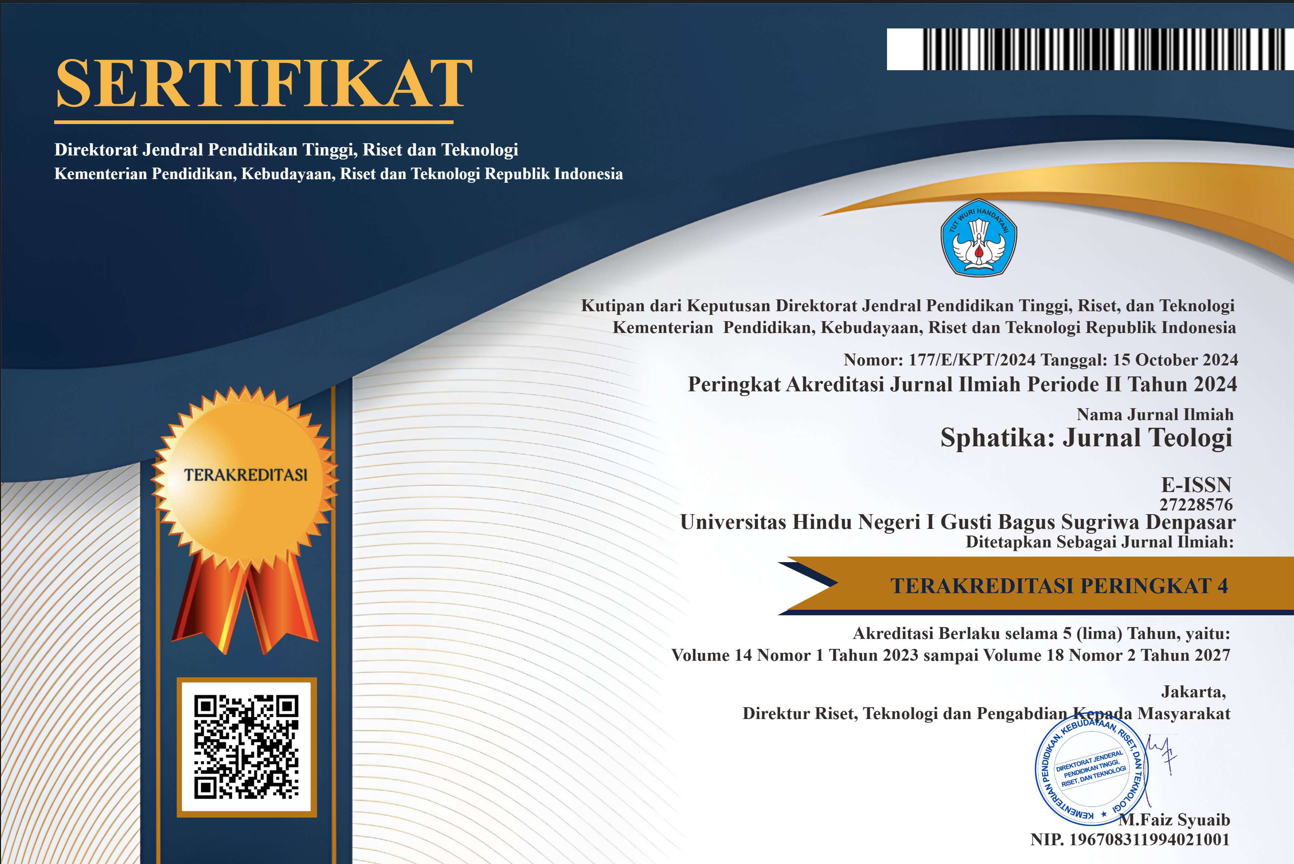Gamelan Bali dalam Konstelasi Estetika
DOI:
https://doi.org/10.25078/sphatika.v15i1.3153Keywords:
aesthetics; Balinese gamelan; philosophy.Abstract
Substantially, creativity cannot be separated from the elements of reason and the elements of human taste. Various arts and traditions that were born from human creativity eventually became the salience from each region of their maker. Gamelan is one of the many traditional Indonesian riches that was born from various considerations of thought, idea, notion, taste, and creativity of humans. Gamelan is a group of musical instruments with different beat patterns that are used in playing songs / ending. The emergence of the gamelan began when Hindu-Buddhist culture started to dominate the archipelago. There are several types of gamelan including Javanese gamelan, Sundanese gamelan, Banjar gamelan, Minang gamelan, and Balinese gamelan. All types of gamelan have their own uniqueness according to the area where it is developed.
Gamelan is not only used as a musical accompaniment in traditional arts but is also used in various religious rituals. In Bali, almost all religious activities, especially in Hindu religious ceremonies, always use gamelan accompaniment. Balinese gamelan is one of the elements of the five voices (panca suara) that are always present in every yajna ceremony in Bali. These five voices cannot be separated from the Hindu aesthetic concept where each sound produced has a philosophical meaning. Balinese gamelan that is present in various Hindu rituals in Bali is not only for entertainment but also has a magical value that can vibrate the atmosphere. This article will discuss the philosophy of Balinese gamelan in aesthetic constellations.
References
Ardana, I Ketut. 2020. Representasi Konsep Patet dalam Tradisi Garap Gamelan Bali. Yogyakarta : Resital
Aryasa, I Wayan Madra. 1983. Nilai Mitos Gamelan Bali dalam Lontar Aji Ghurnita. Denpasar: Taman Budaya Bali
Ariani, Nyoman Wiraadi Tria dan S. Luh Made Karisma Sukmayanti. 2013. Hubungan Intensitas Latihan Musik Gamelan Bali dan Kecerdasan Emosional. Vol. 1, No. 1, 151-159. Jurnal Psikologi Udayana. Denpasar : UNUD
Bandem, I Made. 1986. Prakempa: Sebuah Lontar Gamelan Bali. Denpasar: Akademi Seni Tari
Indonesia.
Bandem, I Made. 2013. Gamelan Bali Di Atas Panggung Sejarah. Denpasar : BP Stikom.
Darmawan, I Putu Ariyasa, Khrisna, Ida Bagus Wika. 2019. Konsep Ketuhanan Dalam Suara Gamelan Menurut Lontar Aji Ghurnnita. Singaraja : Genta Hredaya
Dibia, I.W., Ballinger, R. 2004. Balinese Dance, Drama & Music. Edisi Pertama. Jakarta: PT Java
Books Indonesia.
Djelantik, A.A.M. 2004. Estetika Sebuah Pengantar. Bandung: Masyarakat Seni Pertujukan.
Donder, I. K. 2005. Esensi bunyi gamelan dalam prosesi ritual hindu. Surabaya: Paramita
Irawati, E. (2019). Transmission of kêlèntangan musik among the Dayak Bênuaq of East Kalimantan in Indonesia. Malaysian Journal of Musik, 8, 108–121. https://doi.org/10.37134/ mjm.vol8.7.2019
Kartawan, I Made. 2005. Keragaman Laras Gong Kebyar di Bali Kajian Dalam Perspektif Budaya.
Volume 17 No. 2 September 2005: 174-191. Mudra Jurnal Seni Budaya. Denpasar : ISI Denpasar
Permadi, Ida Bagus Hery Yoga. 2021. Adaptasi Pengembangan Pola Kotekan Gamelan Bali
dalam Permainan Gitar Klasik. Yogyakarta : Jurnal Of Music
Rembang, I Nyoman. 1973. Gambelan Gambuh dan Gambelan Lain-Lainnya di Bali. Denpasar:
Kertas Kerja Pada Workshop Gambuh
Soedarsono, R.M. 1972. Djawa dan Bali: Dua Pusat Perkembangan Drama Tari Tradisional di
Indonesia. Jogjakarta : Gadjah Mada University Press
Sugiartha, I Gede Arya. 2015. Bentuk dan Konsep Estetik Musik Tradisional Bali. Denpasar : ISI Denpasar
Udiyana, I Gede Eka. 2015. Pengembangan Aplikasi Gamelan Angklung Bali Berbasis Android. Singaraja : Karmapati Undiksha














